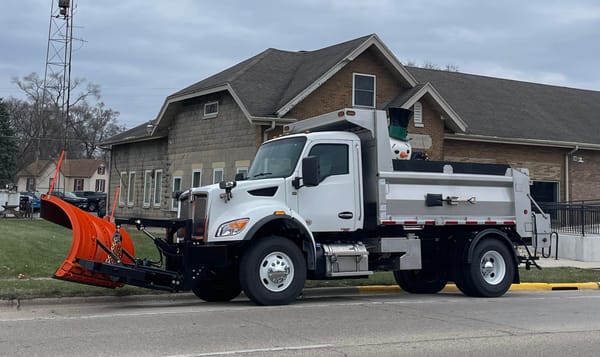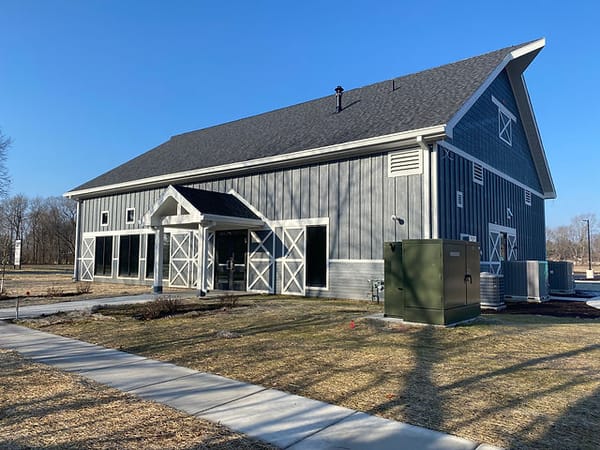New Congressional map unites Rockton and Roscoe with Geneseo, Minonk, Washington, and Chenoa
The 16th District's borders avoid Rockford, Freeport, Peoria, and Bloomington.

Democratic leaders in the Illinois General Assembly released a second draft of proposed congressional district maps over the weekend - even more Democratic-leaning than the first draft - as they prepared to head into the final three days of their fall veto session.
Like the first set of maps that were released Oct. 15, the latest draft would create a number of oddly-shaped districts meant to favor Democratic candidates going into the 2022 midterm elections. The Illinois congressional delegation is currently divided between 13 Democrats and five Republicans. Illinois lost one seat in the U.S. House because of declining population in the rural south. Both Rockton and Roscoe increased in population, however.
The new map, instead of splitting Roscoe between three Congressional districts, keeps both Rockton and Roscoe in the 16th Illinois District. The new map also includes Geneseo, Minonk, Washington, and Chenoa, none of which are currently in the District. Byron and Rochelle are in both.
The reshaped Illinois 16th District would begin near Galena, stretching east along the Wisconsin border to Alden north of Woodstock, south past the Bloomington-Normal area, circling around the city of Rockford (and circling around Bloomington-Normal). In fact, the district's boundaries deliberately circle around the cities of Belvidere, Freeport, Peoria, and Kewanee as well. Galena and Hartland are also excluded.
In Winnebago County, the 16th District includes Rockton, Roscoe, Machesney Park, and part of Loves Park (with Beefaroo and Park Lanes Bowl). The rest of Loves Park is in the 17th District.
Keeping Roscoe and Rockton in the 16th District also keeps Republican Rep. Adam Kinzinger there, with boundaries partly the same as his current 16th District, but it also puts his hometown of Channahon within the 1st District. However, Federal law doesn't require members of Congress to live in the district they represent.
Republican incumbents Reps. Mike Bost and Mary Miller might end up competing in a single district, since her hometown of Oakland would now be in Bost's 12th District. Pitting incumbent Republicans against each other would contribute to the goal of eliminating Illinois Republican seats.
Republican Rep. Darin LaHood's 18th District was chosen as the seat to be eliminated after the 2020 Census. His hometown is Peoria, which would be in the 17th Illinois District. Which leads me to...
For daily updates, subscribe to our email newsletter - at no cost to you - by clicking here.
Legislators are supposed to draw districts to be geometrically compact and contiguous, but the 17th District was too great a temptation. After all, controlling it may help decide who controls the U.S. House of Representatives. An analysis by the political website FiveThirtyEight estimates the latest maps would create 13 Democratic-leaning districts (instead of the current 11), three Republican-leaning districts (instead of the current five) and only one highly competitive district (there were two), the 17th District, currently represented by Democrat Cheri Bustos of Moline, who won't seek reelection next year.
The loss of two Republican seats in Illinois could prove important in next year's mid-term election, when the Democrats are expected to lose seats (the incumbent party usually does) and possibly its slim majority in the U.S. House.
In one of the most noticeable cases of geometrical gerrymandering in Winnebago County, Guilford High School and Rock Valley College are connected to the 17th District only by a narrow strip of territory around Spring Brook and Spring Creek Roads, surrounded by the 16th District.
Meanwhile, Republican Rodney Davis of Taylorville, would be placed in a reshaped 15th District that includes his hometown, goes east around the city of Champaign, then curves back west to take in much of west-central Illinois, from an area just north of St. Louis to an area just south of the Quad Cities.
The plan would also create a new 13th District that would stretch from Belleville and East St. Louis about 170 miles along a very narrow stretch that snakes through Springfield, Decatur and Champaign. That district currently has no incumbent, but FiveThirtyEight estimates it would lean Democratic by about 7 percentage points.
On Tuesday, Nov. 26, the Illinois House Redistricting Committee held a public hearing. “These new proposed congressional boundaries are historic and reflect the great diversity present throughout the state,” said State Rep. Elizabeth Hernandez (D), who chairs the House Redistricting Committee. “The proposal ensures minorities, as well as the rest of Illinoisans, have an equitable voice in representation in Washington.”
The revised maps would also create a second “coalition” district in the Chicago area, defined in the Illinois Voting Rights Act as “a district where more than one group of racial minorities or language minorities may form a coalition to elect the candidate of the coalition's choice.”
Citizens overwhelmingly told the committee they opposed the new maps. Near the end of Tuesday's hearing, Rep. Tim Butler (R) asked Rep. Hernandez to answer a specific question: "Were these maps drawn for political, partisan advantage?"
Rep. Hernandez hesitated and replied, "Many factors were taken into consideration through these hearings." When Rep. Butler pressed her, the most she would say was, "politics play a role in this."
Legally if not morally, she didn't need to be ashamed to say it. A three-judge federal court panel wrote last week, “To be sure, political considerations are not unconstitutional,” citing a 2019 U.S. Supreme Court case. “And we are not so naive as to imagine that any party in power would decline to exercise levers available to it to maximize its opportunity to retain seats in the General Assembly.” Still, they ruled that the state legislative redistricting plan that Gov. JB Pritzker signed into law in June was unconstitutional.
Rep. Butler later asked, "When will we see the actual legislation with the map that Democrats are proposing?" Rep. Hernandez said she would let him know, implying that she would have to ask someone higher, even though she is chairperson of the committee. Maybe she meant Senator Omar Aquino (D), chairman of the Illinois Senate Redistricting Committee.
Joel Funk, who was a Democratic candidate for Congress (Illinois 12th District), testified at the hearing, "This is the kind of map that convinces more Americans that their vote doesn’t matter and pushes those that still bother to vote further apart. Packing and cracking the electorate into slivers of blue and blobs of red is destroying our country—not healing it."
The Senate Redistricting Committee is scheduled to meet Wednesday, Oct. 27, but a time and location has not yet been announced. The public can send comments to redistrictingcommittee@senatedem.ilga.gov and watch committee hearings of the Illinois General Assembly at https://www.ilga.gov/senateaudvid.asp or https://www.ilga.gov/houseaudvid.asp. The actual link may not appear until just before the hearing.
Peter Hancock of Capitol News Illinois provided some of this reporting. Capitol News Illinois is a nonprofit, nonpartisan news service covering state government and distributed to more than 400 newspapers statewide. It is funded primarily by the Illinois Press Foundation and the Robert R. McCormick Foundation





